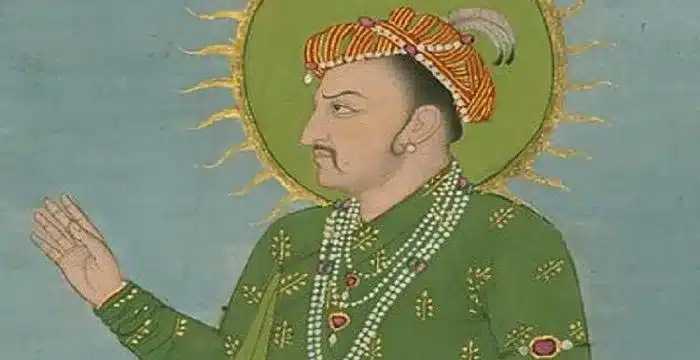Nur-ud-din Muhammad Salim, known by his imperial name, Jahangir (31 August 1569 – 28 October 1627), was the fourth Mughal Emperor, who ruled from 1605 until his death in 1627.
He was the son of Akbar the Great, ruler of the Mughal empire in northern India who had expanded the Mughal rule as far as Gujarat and Bengal. He was the declared successor to his father from an early age.
EARLY LIFE
Jahangir was born on 31 August 1569, in Fatehpur Sikri. He succeeded to the throne on Thursday, 3 November 1605, eight days after his father’s death. Salim ascended to the throne with the title of Nur-ud-din Muhammad Jahangir Badshah Ghazi, and thus began his 22-year reign at the age of 36. Jahangir, soon after, had to fend off his own son, Prince Khusrau Mirza, when the latter attempted to claim the throne based on Akbar’s will to become his next heir. Khusrau Mirza was defeated in 1606 and confined in the fort of Agra. Jahangir considered his third son, Prince Khurram (future Shah Jahan), his favourite. As punishment, Khusrau Mirza was handed over to his younger brother and was partially blinded and killed.
ACHIEVMENTS
Jahangir’s interest in painting also served his scientific interests in nature. The painter Ustad Mansur became one of the best artists to document animals and plants which Jahangir either encountered on his military exhibitions or received as donations from emissaries of other countries. Jahangir maintained a huge aviary and a large zoo, kept a record of every specimen and organised experiments. A later historian remarked that Jahangir would have made an excellent museum’s director.
In matters of government Jahangir soon came under the influence of his Persian wife and her relatives, who from 1611 dominated Mughal politics. While this had a beneficial influence on cultural life – Jahanhgir promoted Persian culture and continued his father’s tradition of public debate between different religions – the continuous plotting at court destabilized the country.
DEAD
The rebellion and court intrigues that followed took a heavy toll on Jahangir’s health. He died in 28 October 1627 and was succeeded by Khurram, who took the name Shah Jahan. Jahangir’s tomb is in the Shahdara gardens in Lahore.

